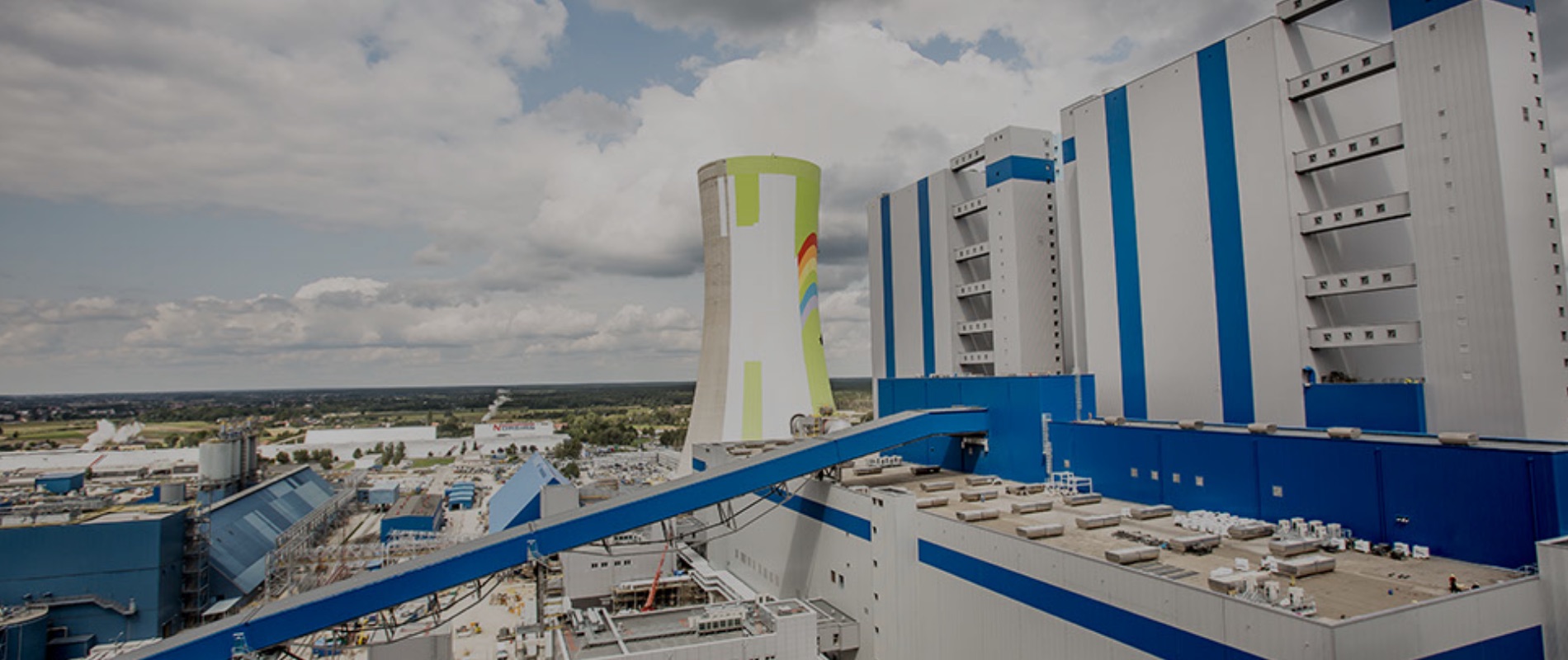- PGE’s vision
- Sustainable transformation
- PGE in 2020
- About the report
- Interactive data
This segment includes lignite mining and generation of electricity in conventional sources.
* managerial perspective.
The main source of revenue in the Conventional Generation segment is revenue from the sale of electricity on the wholesale market, based on electricity prices that are shaped by supply and demand mechanisms, taking into account the variable costs of generation.
At the same time, the segment’s key cost items, given their size and volatility, and thus their impact on operating results, are the cost of production fuels, mainly hard coal and natural gas, as well as fees for CO2 emissions. Lignite-based production, which is of key significance for the Group, is based on own mines, therefore its cost is relatively stable and reflected mainly in fixed-cost items, i.e. personnel costs, third-party services and depreciation.
A significant item in the segment’s revenue constituted revenues from the provision of regulatory system services based on an agreement with PSE S.A. This revenue is in parallel to revenue generated on the electricity market and is related to the need to ensure stable operations for the NPS. Regulatory system services are provided by power plants of PGE GiEK, including Rybnik power plant.
In addition, this segment generates revenues from sales of heat produced both at industrial plants and at the Szczecin CHP plant and Pomorzany CHP plant which form part of ZEDO.
In the segment of Conventional Generation of PGE Group operates the company PGE GiEK S.A. based in Bełchatów. In the reporting period, i.e. as at December 31, 2020, the company consisted of 7 branches located on the area of five voivodships.
Conventional Generation segment consists of: 2 lignite mines (Bełchatów and Turów), 5 conventional power plants (Bełchatów, Turów, Opole, Rybnik, Dolna Odra complex including power plant and 2 CHPs). Conventional Generation is the leader of lignite mining (its share in the extraction market of this raw material accounting for approx. 90% of domestic extraction), it is also the largest generator of electricity as it generates approx. 40% of domestic gross electricity production.
Main assets of the Conventional Generation segment
Conventional Generation segment consists of: 2 lignite mines, 5 conventional power plants and 2 CHPs. The generation is based on lignite extracted from mines owned by the company as well as hard coal and biomass.
.
Installed capacity and production in Conventional Generation segment
| Main fuel types | Annual electricity generation (TWh) | Annual heat generation (TJ) | Installed capacity (MWe) | Installed capacity (MWt) | ||
|---|---|---|---|---|---|---|
| 2020 | 2019 | 2020 | 2019 | 2020 | 2020 | |
| Hard coal | 16.70 | 15.18 | 2.39 | 2.42 | 6,744 | 584 |
| Lignite | 29.72 | 32.12 | 2.66 | 2.65 | 6,465 | 593 |
| Biomass | 0.33 | 0.31 | 0.36 | 0.54 | 76 | 162 |
| TOTAL | 46.75 | 47.61 | 5.41 | 5.61 | 13,285 | 1,339 |


Lignite deposit reserves are determined based on a reserves inventory maintained in the reserves register for a given year up to February 28 as at December 31 of a preceding year (art. 101 p. 3 of the Geological and Mining Act). In the table below are presented lignite resources data as at the end of 2020 and lignite output in 2020.
| Lode | Resources – as at the end of 2020 | Output in 2020 | |
|---|---|---|---|
| (Mg million) | (Mg million) | ||
| Bełchatów – Field Bełchatów | Industrial | 17.00 | 2.39 |
| Bełchatów – Field Bełchatów | Industrial | 593.19 | 32.51 |
| Turów | Industrial | 279.78 | 5.04 |
| TOTAL | Industrial | 889.97 | 39.94 |
| [PLN m] | 2020 | 2019 |
|---|---|---|
| Revenue from sales: | 25,251 | 19,245 |
| EBIT | -647 | -7,109 |
| EBITDA | 1,725 | 2,880 |
| Capital expenditures | 2,372 | 4,018 |
Capital expenditures incurred in Conventional Generation segment in 2020 and 2019
| PLN million | 2020 | 2019 | % change |
|---|---|---|---|
| Investments in generating capacities, including: | 2,114 | 3,398 | -38% |
|
796 | 1,665 | -52% |
|
1,318 | 1,733 | -24% |
| Other | 113 | 180 | -37% |
| TOTAL | 2,227 | 3,578 | -38% |
| Capitalised costs of overburden removal in mines | 145 | 440 | -67% |
| TOTAL with capitalized costs of overburden removal | 2,372 | 4,018 | -41% |